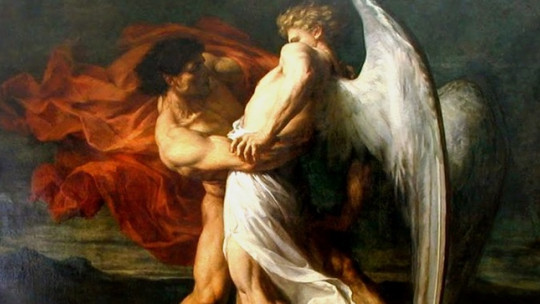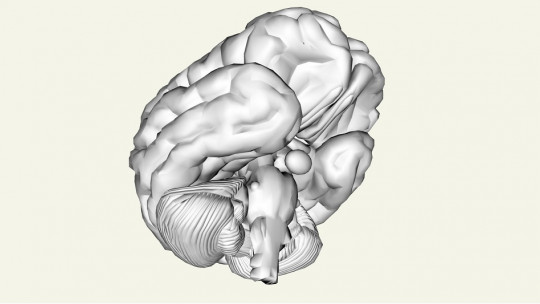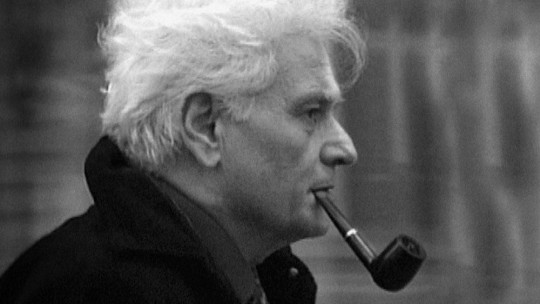
Many people have beliefs that they themselves do not question, truths that in their heads are of unquestionable logic but are weak. However, these ideas are still beliefs, sometimes very absurd, thoughts that are very easily refuted with a little logic and reason.
When these people find themselves in a situation in which what they have said is questioned or the opposite is proven, to defend themselves they usually resort to other more moderate and common sense arguments that they hide as if they were what they really wanted. say.
It happens that they are in a debate and what they first say is a statement that is comfortable for them, but is controversial and easily removable. In order not to look like people who say absurdities, they make a second, more moderate statement. This strategy is the castral mota fallacy Let’s see it below.
What is the castral speck fallacy?
The castral mota fallacy is a type of informal fallacy in which the arguer conceives two positions that share similarities but of different defensiveness One of these positions or opinions is modest and easy to defend, something that is practically part of common sense (mota). The other, on the other hand, is much more controversial, being an opinion that is more difficult to defend (Castro), especially if someone attacks it with rational and logical arguments.
The fallacy occurs when a controversial opinion is being given and someone attacks it, causing the defender of that opinion to change to another opinion that is easier to defend, saying that was what he was defending at the beginning. The arguer advances his controversial opinion, but when it is challenged with arguments that make sense, the arguer insists that he was only advancing toward a more modest position.
What are its origins?
The castral speck fallacy appeared on the philosophical scene in 2005 thanks to the British philosopher Nicholas Shackel, currently a professor at Cardiff University, Wales. Originally calling it the “motte castral doctrine” or “motte-and-bailey doctrine,” Shackel explained this fallacy in an article in the journal Metaphilosophy, explaining that it was a very common phenomenon in the new century. However, although this idea emerged in the mid-2000s, it was not until 2014 that this type of fallacy became popular thanks to the “Slate Star Codex” blog.
This fallacy It takes its name from a very interesting type of fortification from the Middle Ages: the castral motas These were a special type of castle that consisted of two very clearly differentiated elements: the fort and the mota. Although the fort and the mota were two parts of the same castle, they had very different functional characteristics and are very similar to the types of arguments used modernly when the fallacy that shares the same name occurs.
The fort was the place where daily tasks were carried out. There were fertile lands to cultivate, workshops to manufacture goods and cabins to live in, that is, the fort was a productive and habitable area. This part of the castle was surrounded by some barrier or ditch but they were easily traversable, so the forts were not very safe places in case of invasion.
The motte was the easiest part of the castle to defend, but at the same time the least habitable It consisted of a tall tower made of stone, with hardly any windows, cold, dark and humid in which no one would choose to live by choice. Its purpose was that, when the fort was attacked, the inhabitants of the castle would take refuge on the motte while they waited for the attack to stop. Thus, the castral mottes combined the best of both structures, being habitable environments that offered protection.
And what do these castles have to do with the debates?
As we said, the forts worked in such a way that, on a peaceful day, their inhabitants exploited the fort, that is, took advantage of its lands, workshops and cabins. In the event of an invading attack, these inhabitants took refuge in the tower, being uncomfortable but well protected until the danger disappeared. Well then, Shackel discovered that many people used a strategy very similar to the one our medieval ancestors used when arguing their opinions
Many people defend theories that contain two types of statements. On the one hand, they make assertions that are very difficult to defend against others but that happen to be the main claim of their theory. This part of his theory would be the equivalent of the fort of the medieval castral mota, the comfortable point, pleasant to believe in, but also weak and unprotected by reason and common sense. Let’s call it “idea-castro”. An example would be the main argument of postmodernism: “all reality is a social construction.”
The problem with the Castro-idea is that it is easily objectionable, that is, it can be destroyed very easily, even using the very arguments used by the person who promulgates it. Taking the idea that “all reality is a social construction”, if this were so, then wouldn’t it be enough for us all to agree to put an end to misfortunes? Hunger, HIV, wars and overflowing coffee in our cup are all real events. What are we waiting for to change our reality?
This objection stated here puts the person who supports his Castro-idea in trouble. The idea that reality is something socially constructed is not common sense. Most of the important issues in our world cannot be changed simply by changing the way we view them. This would be the logic that would dismantle the main point of postmodernism.
What happens next? Well, continuing with the simile of the castral mota, When his idea-castro is attacked, the person has to take refuge and ends up in a safer but uncomfortable place It is here where he resorts to the speck-idea, an idea that is closer to common sense and logic, is more rational and moderate. In the case of postmodernism, the defender in question would say that what he wanted to say is that, in reality, society influences the way we see reality and that this was the idea that he wanted to defend in the beginning. If we have understood anything else, it is because we have not known how to understand it.
In fact, speck-ideas are so reasonable that they may even turn out to be obvious. But this is not what is important, but rather its function of sheltering those who say one thing and, when they are “caught”, saying another different but related idea to protect themselves when their castro-ideas have been attacked with some rational and logical argument. It is at this point that, continuing with the example of the postmodern, he will say that we have to see how we stand, that in the end he was only defending the most obvious position, that is, the speck-idea that the final has brought to light. the light.
After commenting on this clarification and clearing up the “misunderstanding”, it is most likely that we will end up agreeing with that person, coming to the conclusion that there are certain aspects of our way of perceiving the outside world that do depend on how we were raised and the type of society in which we have grown up. Even so, that person should accept that a statement as categorical as the one that reality is a social construct is fallacious, which is probably not the case since, when they find someone who does not question this statement, they will try to put it into their opinion. the head with a shoehorn.
Originally, Shackel presented his doctrine of castral mota to criticize the processes of duplicity in the argumentation that he found in numerous academic works of great modern philosophers, including Michel Foucault, David Bloor, Richard Rorty and Jean-François Lyotard. Furthermore, he used as an example of this fallacy many of the ideas found in the discourses of postmodernist currents.
Structure of discussions with this fallacy
As an outline, we are going to see what the usual structure of the debates in which the castral mota fallacy occurs is like understanding as “controversial interpretation of a point of view
A variation of this phenomenon is the one we have below, especially common in thread type debates on social networks such as Reddit or Twitter.
Examples of this fallacy
Finding examples of the castral mota fallacy is very simple We simply need to open an account on a social network, for example Twitter, and see how its community debates all kinds of ideas, sometimes very absurd and in a toxic way. We could give an infinite list of examples out of so many that there are, for this reason we have selected a few that are well representative of the phenomenon.
1. The existence of God
A religious group affirms that God is a supernatural creative entity who creates universes from nothing, people from ribs or mud, is capable of splitting the seas in half and heals the sick (castro).
Atheists join the debate, saying that God cannot exist since it makes no sense for an entity with those powers to exist.
Religious people object by saying that, in reality, the word “God” is just another name for beauty and order in nature These religious people ask atheists if they are denying that there is beauty and order (mota) in the Universe.
Atheists agree that the universe is beautiful and accept the use of the word God to refer to such beauty, understanding it as a simple metaphor for order and beauty.
Religious people once again defend the idea that God is a supernatural and all-powerful entity, capable of doing everything they have said he does.
2. Not accepting Jesus takes you to hell
Some religious people affirm that if you do not accept Jesus you will burn in Hell forever (castro).
Some skeptics respond to this statement by saying that this does not make sense since if religion defends that Jesus is peace and love, it is not logical that not following him implies punishment.
The religious defend themselves by saying that, in reality, “burning in Hell” is nothing more than a metaphor to say that a person who does not accept Jesus is lost, without knowing what to do in his life (mota).
The skeptics understand the metaphor, saying that in that case they will continue not accepting Jesus since it seems that he is satisfied with the decision that is made, whatever it may be.
The religious once again defend that not accepting Jesus implies that we go headlong to Hell, where our flesh will be filled with worms that will eat away at our insides (castro).
The skeptics once again criticize the point of view of the religious, using the same argument as before, that is, that it does not make sense that not accepting God or Jesus implies such a harsh punishment.
The religious defend themselves again saying that those worms that will eat away at our insides It is nothing more than another metaphorical way of saying that living without God implies emotional suffering (mota)
3. Presumption of innocence
Some extremist feminist movements argue that to be a real feminist it is necessary to agree with certain controversial ideas, including denial of presumption of innocence of a man who is accused of having committed violence against women, both physical and sexual (castro).
Someone joins the debate who maintains that denying the presumption of innocence is a violation of human rights and that it is not fair at all. In fact, that assumption would imply defending gender inequality, only this time reversing the balance.
Extreme feminists say that, in reality, what they wanted to say is that they defend that women and men are equal and that with that statement what they meant is that special consideration should be given to the protection of the victim of violence. gender (speck).
The person who has commented that the denial of the presumption of innocence is unfair is satisfied to hear the new idea that extreme feminists have presented to him. Extreme feminists once again say that the presumption of innocence of any man who is investigated for violence against women should be denied, whether there is evidence or not.
4. Pseudotherapies
Many promoters of pseudosciences, such as reiki, homeopathy, Bach flowers or other alternative therapies They claim that their treatments help cure cancer, eliminate chronic pain or improve problems such as diabetes or cholesterol (castro)
Before their statements, someone responds to them that they have scientific evidence that what they are stating is not true, that they do not help at all to improve the state of health of those who undergo these treatments.
The promoters of these pseudotherapies say that their intention is actually to give hope to those people who need it most and that the placebo can help them relieve some of their stress and feel more cared for. Furthermore, there are diseases that cannot be cured with either scientific or alternative medicine, but the alternative at least does not apply invasive treatments nor does it induce annoying side effects (mota).
The person who has criticized them feels satisfied with the explanation, considering that although he knows that the promoters of these treatments know that their therapies do not cure, at least they do so to calm those who need it most, apparently acting in good faith. So, this person stops criticizing them.
The promoters of pseudoscience are back at it, stating that yes, their treatments cure and that patients with serious medical illnesses should abandon conventional medical treatments to follow their own, which are more “natural”, benign and do not induce side effects. unwanted secondary








